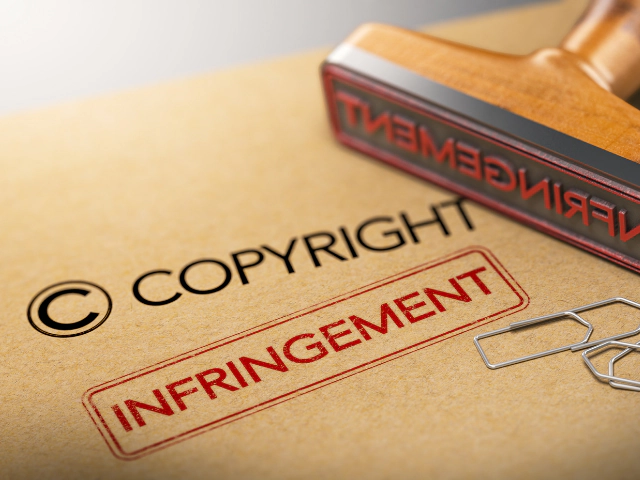Print on Demand (POD) offers a unique business model allowing individuals and businesses to sell custom designs on various products without the need for inventory. However, the POD world requires a clear understanding of copyright laws. This article from Revenus Media delves deep into the essentials of copyright in the POD industry. It emphasizes the importance of respecting intellectual property rights, and the consequences of infringement, and offers guidance on how to navigate and protect oneself in this space.
Understanding Print on Demand Copyright

Print on Demand (POD) is a business model that enables individuals or businesses to create and sell custom designs on various products without holding inventory. However, this model comes with its own set of legal obligations, particularly with regard to copyright infringement. Understanding print-on-demand copyright is crucial for anyone looking to start a POD business.
Copyright law protects the creators of original works, such as designs, photographs, and written content. Print on Demand Copyright refers to the legal protection of intellectual property rights in the Print on Demand industry. It ensures the designer retains the sole right to reproduce and distribute their work. This means that if a designer creates a design, they have the exclusive right to use it for commercial purposes.
In the context of print on demand, copyright infringement occurs when someone uses a design without the owner’s permission. This could happen in various ways, such as copying a design from a website or using a trademarked logo in a design. Infringing on someone’s copyright can lead to legal action, which could result in fines, damages, and even the closure of a business.
To avoid copyright infringement, conducting thorough research before creating any designs is essential. This includes checking if a design is already copyrighted or trademarked, avoiding using copyrighted images or logos, and creating original designs. It is also important to understand the legal implications of using copyrighted material, as it could result in serious consequences.
Licensing and Partnerships

Leveraging licensed content can be a game-changer. Licensing allows businesses to legally use copyrighted designs, characters, logos, and more in their products. For instance, a POD business might acquire a license to print popular movie characters on t-shirts.
However, it’s crucial to understand the terms of any licensing agreement. Some licenses might restrict the type of products you can create, the regions you can sell in, or the duration of the license. Always ensure you’re adhering to these terms to avoid legal complications.
Partnerships, on the other hand, involve collaborating directly with artists or creators. This can be a win-win situation. The artist gets a platform to showcase and monetize their designs, while the POD business benefits from unique content that can’t be found elsewhere. Such partnerships can be formalized with contracts that detail profit-sharing, design ownership, and other essential terms.
You Might Also Like:
The Ultimate Guide to Print on Demand: Everything You Need to Know
Legal Implications of Print on Demand Copyright

Copyright Infringement Consequences
Copyright infringement occurs when someone uses another person’s creative work without permission. In the context of print on demand, this can occur when a designer or seller uses someone else’s design without obtaining the necessary permissions or licenses.
The consequences of copyright infringement can be severe, including legal action, fines, and damages. In some cases, the infringing party may be required to cease selling the infringing product and destroy any remaining inventory.
It is important for print on demand sellers to understand the legal implications of copyright infringement and take steps to ensure they are not infringing on someone else’s intellectual property.
Legal Protection for Artists and Writers
Copyright law provides legal protection for artists and writers, giving them exclusive rights to their creative works. This includes the right to reproduce, distribute, and display their work.
In order to protect their creative works, artists and writers can register their copyright with the US Copyright Office. This provides additional legal protection and allows them to take legal action against anyone who infringes on their copyright.
Print on demand sellers should be aware of the legal protections afforded to artists and writers and take steps to ensure they are not infringing on someone else’s copyright. This includes obtaining the necessary permissions and licenses before using someone else’s design or creative work.
Navigating Print on Demand Copyright Laws
Two important aspects of copyright laws that are relevant to POD businesses: are fair use and public domain content.

Understanding Fair Use
Fair use is a legal doctrine that allows the use of copyrighted material without permission from the copyright owner under certain circumstances. These circumstances include criticism, comment, news reporting, teaching, scholarship, and research. However, determining whether a particular use of copyrighted material is fair use can be complex and requires a careful analysis of the facts.
To determine whether a particular use of copyrighted material is fair use, courts consider four factors:
- The purpose and character of the use, including whether such use is of a commercial nature or is for nonprofit educational purposes;
- The nature of the copyrighted work;
- The amount and substantiality of the portion used in relation to the copyrighted work as a whole; and
- The effect of the use upon the potential market for or value of the copyrighted work.
Dealing with Public Domain Content

Public domain content refers to works that are not protected by copyright and can be used freely without permission. Examples of public domain content include:
- Works whose copyright has expired
- Works that were never protected by copyright
- Works that have been dedicated to the public domain by their creators.
When creating designs for POD products, it is important to ensure that the content used is in the public domain or has been properly licensed. Using copyrighted material without permission can result in legal action, including fines and damages.
Using Services to Create Your Own Art for POD
Originality is key. While there are countless designs available online, creating your own unique art can set your products apart and reduce the risk of copyright infringement. Thankfully, there are several services and platforms available to help even the most novice of designers produce professional-quality artwork:
Digital Art Platforms:
- Adobe Creative Cloud: This suite includes tools like Photoshop for image editing, Illustrator for vector graphics, and Fresco for digital painting. With a plethora of tutorials available, anyone can start creating designs.
- Procreate: An iPad-exclusive app, Procreate offers a natural drawing experience with a range of brushes and tools. It’s perfect for illustrators and artists.
Graphic Design Tools:
- Canva: A user-friendly platform with a drag-and-drop interface. It offers a vast library of templates, fonts, and design elements, making it easy to create custom designs.
- Kittl: A newer entrant in the design tool space, Kittl offers intuitive design features tailored for both beginners and professionals. With a user-friendly interface and a rich library of templates and design elements, Kittl makes it easy for users to craft unique and compelling visuals for their Print on Demand products.
3D Design and Mockup Tools:
- Blender: A free, open-source 3D creation suite. It’s ideal for creating 3D art, animations, and even mockups of products.
- Placeit: This platform offers mockup templates for various products. Users can insert their designs onto t-shirts, mugs, phone cases, and more to visualize the final product.
Collaboration with Artists:
- Behance and Dribbble: These platforms showcase portfolios of artists and designers. Businesses can collaborate with artists whose style aligns with their brand.
- Fiverr and Upwork: Freelance platforms where you can hire artists to create custom designs based on your specifications.
Stock Image Sites for Creating Art in POD

When creating designs for Print on Demand, stock image sites can be invaluable. They offer a plethora of images, vectors, and graphics that can be incorporated into your designs. However, it’s crucial to understand the licensing terms of each platform, especially when using images for commercial purposes.
Stock Image Sites:
- Adobe Stock: A service provided by Adobe that offers a rich collection of high-quality, royalty-free photos, vectors, illustrations, templates, 3D assets, and videos. Adobe Stock integrates seamlessly with Adobe’s Creative Cloud software, making it a popular choice for designers and creatives. They offer various licensing options, including standard and extended licenses, catering to different commercial needs. Adobe Stock’s assets are known for their professional quality and wide variety.
- Shutterstock: One of the most popular stock image platforms, Shutterstock offers millions of photos, vectors, and videos. They operate on a subscription or pay-per-image model.
- Creative Fabrica: Primarily known for fonts, Creative Fabrica also offers graphics, crafts, and more. Their assets come with a commercial license, suitable for POD.
- Pond5: While Pond5 is renowned for its video and music collections, it also offers photos and illustrations. Their licensing terms vary, so it’s essential to check individual asset licenses.
- Creative Market: A platform where independent creators sell their designs, fonts, graphics, and more. Each product comes with its own licensing terms, so always check before using it for POD.
- Depositphotos: A comprehensive stock image platform with a vast collection of photos, vectors, and videos. They offer various licensing options, including a standard license suitable for many commercial uses.
- Dreamstime: With a mix of free and paid content, Dreamstime provides a wide range of images. Their licensing terms are clear, with options for commercial use.
- Pexels: A vast collection of high-quality photos and videos contributed by talented creators. The platform offers a straightforward license, allowing for commercial use with few restrictions.
- Pixabay: Similar to Pexels, Pixabay provides a wide range of photos, vectors, and videos. The content is under a Creative Commons license, making it suitable for commercial use.
Protecting Your Work in Print on Demand
With the ease of copying and sharing digital content, it’s important to take steps to protect your work from copyright infringement. Here are some ways to safeguard your designs and products:
Registering Your Copyright
Registering your copyright is an important step in protecting your intellectual property. It establishes your ownership of the work and gives you the right to take legal action against those who infringe upon it. While copyright protection is automatic, registering it with the United States Copyright Office provides additional benefits.
By registering your copyright, you have the ability to sue for damages and attorney fees. You can also use your registration as evidence in court. Additionally, registering your copyright before infringement occurs can result in higher damages.
Using Watermarks and Digital Signatures

Watermarks and digital signatures are effective ways to deter others from stealing your designs. Watermarks are transparent logos or text that are overlaid onto an image. They can be used to display the copyright owner’s name or logo, making it clear that the image is protected by copyright.
Digital signatures, on the other hand, are unique codes that are embedded in the metadata of a digital file. They can be used to verify the authenticity of the file and ensure that it has not been altered. Digital signatures can also be used to track the use of a file and identify any unauthorized use.
While watermarks and digital signatures can be effective deterrents, they do not provide complete protection. They can be removed or altered by someone with enough knowledge and skill. However, they do make it more difficult for someone to steal your work and claim it as their own.
Tools and Resources
Several tools can assist POD businesses in ensuring their designs are original and not infringe on existing copyrights. Here are a few:
- Reverse Image Search Tools: Platforms like Google Images or TinEye allow users to upload an image and find its occurrences on the internet. This can be useful to check if a design is already in use elsewhere.
- Copyright Databases: Websites like the U.S. Copyright Office’s online catalog can be used to search for registered copyrights. This can help verify if a design or concept is copyrighted.
- Design Creation Software: Some software solutions offer built-in copyright check features. For instance, certain graphic design platforms might alert users if they’re using a copyrighted element in their designs.
Dealing with Print on Demand Copyright Claims
Responding to Copyright Claims
If you receive a copyright claim, it is essential to respond promptly and professionally. Ignoring the claim or responding aggressively can lead to legal action, which can be costly and time-consuming. Here are some steps to take when responding to a copyright claim:
- Review the claim: Carefully read the claim and determine whether it is valid. If you believe that the claim is incorrect, you can dispute it.
- Remove the infringing content: If the claim is valid, remove the infringing content immediately. This will show that you take copyright laws seriously and can prevent further legal action.
- Contact the claimant: If possible, reach out to the claimant and try to resolve the issue. You can offer to compensate them for any damages or work out a licensing agreement.
- Seek legal advice: If the claim is complex or you are unsure how to proceed, it is best to seek legal advice. A lawyer can help you navigate the legal process and protect your business.
Preventing False Claims
Unfortunately, some people may make false copyright claims to try to take down your content or extort money from you. Here are some steps you can take to prevent false claims:
- Conduct thorough research: Before using any images or designs, conduct thorough research to ensure that they are not copyrighted. You can use websites like Creative Commons or royalty-free image databases to find images that are free to use.
- Keep records: Keep detailed records of all the images and designs you use, including their sources and any licensing agreements. This will help you defend against false claims and prove that you have not infringed on anyone’s copyright.
- Use copyright notices: Include copyright notices on your website and products to show that you take copyright laws seriously and deter false claims.
- Have a clear copyright policy: Have a clear copyright policy on your website that outlines your commitment to respecting intellectual property and the consequences of infringing on copyright laws.
International Print on Demand Copyright Considerations
As the Print on Demand industry grows globally, understanding international copyright laws becomes paramount. Here’s what to consider:
- Varied Laws: Copyright laws aren’t universal. What’s permissible in one country might be illegal in another. For instance, the duration of copyright protection can vary, with some countries offering 50 years after the creator’s death, while others might offer 70 years.
- Territorial Rights: Some licenses might grant rights only for specific regions or countries. Always check the territorial scope of any license or agreement.
- Cultural Sensitivities: Beyond legal considerations, it’s essential to be aware of cultural nuances. A design that’s acceptable in one culture might be offensive or taboo in another.
- Local Partnerships: Collaborating with local artists or creators can be a strategic move. Not only does it ensure unique designs catering to a specific audience, but local partners can also provide insights into regional copyright norms and cultural preferences.
By being proactive and educating oneself about international copyright considerations, POD businesses can navigate the global market more confidently and legally.
Frequently Asked Questions
What are the best practices for avoiding print on demand copyright issues?
When creating print on demand products, it is important to ensure that you are not infringing on any copyright laws. To avoid copyright issues, it is recommended that you use your own original designs or obtain licenses for any copyrighted material that you want to use. Additionally, you can conduct research to ensure that your designs do not resemble any existing copyrighted material.
Is it legal to print copyrighted material for personal use with print on demand services?
No, it is not legal to print copyrighted material for personal use with print on demand services without obtaining a license or permission from the copyright owner. Copyright laws protect the original work of the creator, and it is illegal to reproduce or distribute copyrighted material without permission.
What are the consequences of getting sued for copyright infringement with print on demand products?
The consequences of getting sued for copyright infringement with print on demand products can be severe. If found guilty, you may be required to pay damages to the copyright owner, which can be substantial. Additionally, you may be required to stop selling the infringing products and destroy any remaining inventory. In some cases, criminal charges may also be filed.
How can I ensure that my print on demand products don’t violate copyright laws?
To ensure that your print on demand products do not violate copyright laws, it is recommended that you conduct thorough research to ensure that your designs do not resemble any existing copyrighted material. Additionally, you can obtain licenses for any copyrighted material that you want to use or create your own original designs.
Are print on demand services like Printful and Printify responsible for checking copyright?
Print on demand services like Printful and Printify are not responsible for checking copyright. It is the responsibility of the seller to ensure that their designs do not infringe on any copyright laws. However, some print on demand services may have policies in place to remove infringing content if it is reported.
Where can I find resources for checking copyright on print on demand products?
There are several resources available for checking copyright on print on demand products. The U.S. Copyright Office provides information on copyright laws and registration. Additionally, websites like Copyright.gov and the International Copyright Institute offer resources for checking copyright and obtaining licenses.










